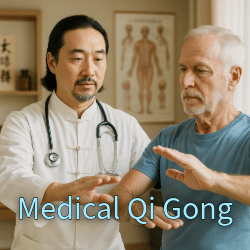What is Medical Qi Gong? History, Benefits, and Practice Guide
Medical Qi Gong is the healing branch of Qi Gong, rooted in Chinese medicine. Explore its origins in the Huangdi Neijing, modern hospital curricula, evidence-backed health benefits, and a simple how-to guide for safe, therapeutic practice. A practical introduction for anyone curious about harnessing Qi for health and wellness.


